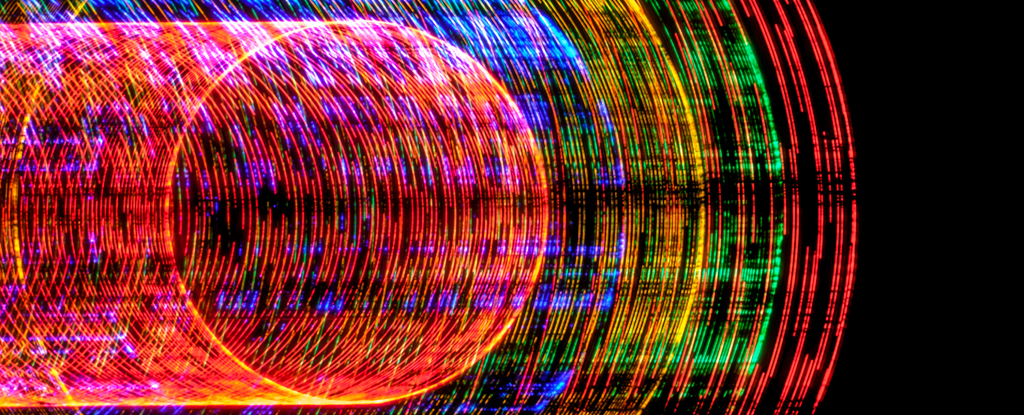Tractor beams make intuitive sense. Matter and energy interact in myriad ways throughout the universe. Magnetism and gravity are both natural forces that can pull objects together, so there’s kind of a precedent.
But constructing a real tractor beam is something else.
A tractor beam is a device that can move an object at a distance. The idea came from a 1931 science fiction story called SpaceHounds by IPC:
cheer me on the Bronx The Titanians have had a tractor ray for ages – he sent me full dope on it – and the Jovians have them both. We’ll have them in three days, and it should be fairly easy to dop the opposite of a tractor – a push or pressure beam – as well.
If science fiction had anything to say about it, tractor beams would already be commonplace, and we could be grateful star trek and war of stars for their dissemination.
But tractor beams already exist, although their range is microscopic.
Microscopic tractor beams are used in devices called optical tweezers. Optical tweezers use lasers to move microscopic objects such as atoms and nanoparticles. They are used in biology, nanotechnology and medicine.
These tractor beams work on microscopic objects but are not powerful enough to pull larger macroscopic objects.
Now a research team has successfully demonstrated a macroscopic tractor beam. They published the paper explaining their work in the journal Optics Express. Its title is “Macroscopic laser drawing based on the Knudsen force in rarefied gas,‘ and the lead author is Lei Wang from QingDao University of Science and Technology in China.
“In previous studies, the light pulling force was too small to pull a macroscopic object,” said Wang.
“With our new approach, the slight pulling force has a much larger amplitude. In fact, it’s more than three orders of magnitude greater than the slight pressure used to propel a solar sail, which uses the momentum of photons to exert a small thrust of violence.”
This macroscopic tractor beam only works under certain laboratory conditions, so this is a demonstration, not a practical development. At least not yet.
First of all, it works with specially made things: macroscopic graphene SiO2 composite objects that the researchers built for the experiments.
Second, it operates in a rarefied gaseous environment that is at a much lower pressure than Earth’s atmosphere. While this limits their effectiveness here on Earth, not every world has as much atmospheric pressure as our planet.
“Our technique offers a non-contact and long-range pull approach that can be useful for various scientific experiments,” said Wang.
“The rarefied gas environment we used to demonstrate the technique is similar to the environment we are found on Mars. Therefore, it could have the potential to one day manipulate vehicles or aircraft on Mars.”
Your device works on the principle of gas heating. A laser heats the assembled objects, but one side is hotter than the other. Gas molecules on the back receive more energy, which attracts the object. In combination with the lower pressure in the rarefied gas environment, the object moves.
The researchers built a torsion or rotating pendulum device from their graphene SiO2 Composite structure demonstrating the laser pulling phenomenon. This demonstration made it visible to the naked eye. They used a different device to measure the effect.
“We found that the pulling force was more than three orders of magnitude greater than the slight push,” said Wang. “Also, the laser draw is repeatable and the power can be adjusted by changing the laser power.”
Other researchers have tackled tractor beams in recent years with mixed results. NASA was interested in pursuing the idea of using tractor beams to collect samples with the MSL Curiosity surface rover. One of Curiosity’s instruments is the ChemCam.
It contains a laser that vaporizes rock or regolith and then a microimager to spectroscopically measure its constituents. But NASA wondered if a tractor beam could pull tiny particles from the vaporized sample into the rover for a more complete study.
A NASA NIAC presentation from 2010 said: “If Tractor Beam Technology were incorporated into a ‘ChemCam2’ to suck in dust and plasma particles, tractor beams could add a number of additional scientific capabilities:
- Laser desorption ion spectroscopy
- mass spectrometry
- RAMAN spectroscopy
- X-ray fluorescence”
The same presentation said tractor beams could be used to collect particles from comet tails, ice clouds on Enceladus, and even clouds in Earth’s atmosphere or other atmospheres.
That never materialized, but it shows how compelling the idea is.
This new research has produced interesting results, although it is nowhere near actual practical application. It takes a lot of work and engineering before it even approaches practicality.
First, there must be a well-understood theoretical underpinning that describes how the effect works on objects of different sizes and shapes, and with different power lasers, in different atmospheres.
The researchers know this, of course, but point out that it’s still an effective proof of concept.
“Our work shows that flexible light manipulation of a macroscopic object is feasible if the interactions between light, object and medium are carefully controlled,” said Wang.
“It also shows the complexity of laser-matter interactions and that many phenomena are far from being understood at both the macro and micro scales.”
The crucial part is that this study moves tractor beams from the microscopic to the macroscopic. This is a significant threshold that is difficult to cross.
“This work expands the scope of optical dragging from the micro scale to the macro scale, which has great potential for macro-scale optical manipulations,” the authors said to write in their conclusion.
Spacecraft may very well use tractor beams one day, but they’re unlikely to look anything like they do in sci-fi. war of stars, star trekand SPacehounds by IPC All have tractor beams in combat and conflict.
But in reality, they could prove to be valuable scientific tools.
This article was originally published by universe today. read this original article.





